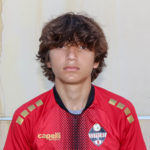Dure: Why do kids play? Birth-year mandate heats up argument
Soccer is a team sport. Right?
That’s a selling point for parents and kids alike. Young players treasure the jerseys that give them an identity — in Single-Digit Soccer, Julie Foudy said, “I had no idea what club soccer was but I liked the green uniforms.” A George Washington University study asking kids what they enjoy about sports ranked “playing well together as a team” and “getting along with your teammates” 43 places ahead of “winning.” Even professional players and national team players treasure the camaraderie of the locker room.
And teamwork is one of the life lessons that parents hope their children will learn through sports. Or The Lego Movie.
Yes, everything is cool when you’re part of a team. But there’s another side to youth soccer, one that U.S. Soccer wants to address through its mandates on birth-year age groups and small-sided games. And it’s setting up a tug-of-war between parents — even parents who know a few things about soccer — and the soccer establishment.
The conversation should be tilting toward talking about individuals, not the development of the team – Ryan Mooney
U.S. Soccer — and surely a lot of coaches — would rather see us all lose our focus on teams. Several clubs and leagues are now touting a “club-centric” or “player-centric” model that theoretically allows players to move freely between tiered teams as their development progresses.
“The conversation should be tilting toward talking about individuals, not the development of the team,” Ryan Mooney, U.S. Soccer’s Director of Sport Development, told SoccerWire.com.
That mindset is a reaction to some “team-centric” practices that come at the expense of the player. We’re all trying to get away from the notion of pigeonholing an 8-year-old as a left back or right mid — or worse, a substitute — for the purposes of a U-9 team’s victory.
+PODCAST: Beau Dure on the chaos caused by USSF’s youth soccer age group mandates
At the youngest ages, conventional wisdom tells us kids should have the opportunity to play a lot and play multiple positions. That’s more fun, which helps the odds of retaining players. And it helps players learn different skills — that U-9 forward who sprints past everyone else to score goal after goal will need to learn to play defense at some point.
The question: How far do we want to go in the other direction, stressing the individual over the team? Do we need to emphasize “player-centric” development even at the earliest ages, when most kids just want to have fun with their friends while their coaches try to give them a positive experience to keep them in the game?
And are these mandates really “player-centric”? Or are they too narrowly focused on kids who excel and fall in love with the game at age 6? And do they give enough leeway for local clubs to do what they think is best for the players they know?
Last fall, soon after the mandates were announced, then-Director of Coaching Dave Chesler recognized the importance of “friendship and classmates,” also acknowledging that players’ developmental age might not correspond to their chronological age.
Mooney also plays down the mandates’ impact on forming teams.
“The initiatives have less to do with leagues and teams and more to do with players developing to the best of their ability,” Mooney said.
But Mooney insists there’s a value to having the youngest recreational players follow the same system as older elite players.
“The reason to have the categorization and the clarity for younger players is that’s a time for which development is very critical, and you can’t get it back,” Mooney said.
And that may be why we can’t get a simple clarification from U.S. Soccer allowing clubs to set up their recreational leagues by grade year (or, more commonly, August 1-July 31, with plenty of allowances for August- and September-born kids to play up with their classmates), though Chesler’s communications from the fall indicated clubs would have some flexibility.
The bottom line: A lot of rec leagues are going to stick with grade years, anyway, on the East Coast and the West. And U.S. Soccer won’t be sending the police to your local club’s office any time soon.
+Read: Youth Soccer Top 25 Twitter Rankings for February 2016
No one will seriously object if a club runs an afterschool program for kindergartners, giving parents another option besides tossing their kindergartners in an age group with a bunch of first-graders who have a year of experience following directions in a school setting. Mooney and Chesler have each mentioned the concept of a “half-year” age group, giving clubs another way to make a kindergarten-only group — or, indeed, a six-month increment at any age, combatting the dreaded Relative Age Effect that favors early birthdays.
And clubs have plenty of creative ways to meet the mandates while accommodating the wishes of players and parents. Chesler’s email suggests “simple solutions such as 2 year age groups” to accommodate school classmates. A U.S. Soccer FAQ gives another simple option: “Players still have the ability to ‘play up’ with older teammates. In addition to being on a team with their peers, ‘playing up’ can also allow players to compete in a more challenging environment, which can aid in their future development.”
You may say this is “just a rec league issue.” Let’s not pretend that what happens with rec leagues doesn’t matter. Every “elite” player starts as a recreational player. We also want every rec player to have a good experience so he or she grows up as a soccer fan who grows up to watch the sport and become a soccer parent.
Besides, we’re going to see travel teams take advantage of loopholes as well, with tons of players playing up so they can stay with their friends.
The soccer cognoscenti may shake their heads. But teams are important to players and parents, and not for trivial reasons. U.S. Soccer can try to fight it, but they’ll lose. They’ll need to figure out how to accommodate our embrace of team culture while making sure individuals learn the skills they need.
##
Beau Dure’s book, Single-Digit Soccer: Keeping Sanity in the Earliest Ages of the Beautiful Game, is now available in paperback at Amazon and in electronic form at Amazon, Barnes and Noble, and other online booksellers. Read more about it at SportsMyriad.
SOCCERWIRE MARKETPLACE
- Wanted Licensed Youth Soccer Coach
- Join Official Elite Summer Soccer Camps with Europe’s Top Pro Clubs!
- The St. James FC Travel Staff Coach - North (Loudoun) & South (Fairfax)
- The St. James FC Girls Academy (GA) Head Coach - 2 teams
- The St James FC Boys Travel Tryouts
- OFFICIAL BAYERN MUNICH SUMMER CAMPS U.S.
- JOIN THE ALLIANCE!
- OFFICIAL FC BARCELONA CAMPS U.S.
- The Cup San Diego - Hosted by Legends FC
- Players Wanted - Undergraduate or Post-graduate











